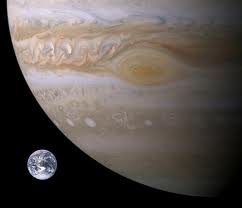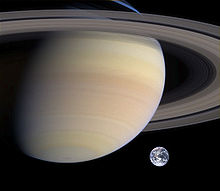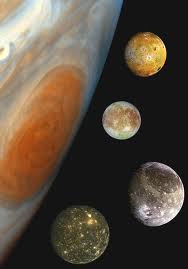Solar System
|
|
|
| Solar System | |||
| Stars | |||
| Planets | |||
| Terrestrials | |||
| Mercury-Venus | |||
| Earth-Mars | |||
| Gas giants | |||
| Jupiter-Saturn | |||
| Uranus-Neptune | |||
| Dwarf | |||
| Moons | |||
Planet Jupiter |
|
This one is the fifth planet but the most gigantic. Like the next three is a gas giant but with mass two and a half times of all the other planets together. Ruler of planets, composed mostly of hydrogen and about 12% helium. On its surface the Great Red Spot is a gigantic storm lasting many centuries. |
|
 |
 |
It has 63 moons, the larger one, Ganymede is bigger than Mercury. |
|
|
|
|
Further distinguishing elements are the planetary rings made of dust and satellite materials and the largest planetary atmosphere where many storms and lightning occur. It rotates very fast; 1 Jupiter day= 10 earth hours and completes an orbit in almost 12 earth years. The gas materials reaching the upper atmosphere become crystals with average temperature -148 Celcius degrees while the core is thousands degrees hot. |
|
Watch the following video to find out more about planet Jupiter: |
|
Planet Saturn |
|
Saturn is the sixth from the sun and second larger gas giant. Due to its mass the conditions on the planet are excessive. It has core of iron, is mostly made of liquid hydrogen and helium, and 9 spectacular rings made of dust, debris and ice. Saturn is similar to Jupiter in materials, temperatures and satellites. On the surface a Great White Spot, a major storm appears every 30 years. It has 62 satellites. 1 Saturn year=30 earth years and 1 Saturn day= approximately earth 10 hours. | |
 |
 |
<< Back | Forward >>
